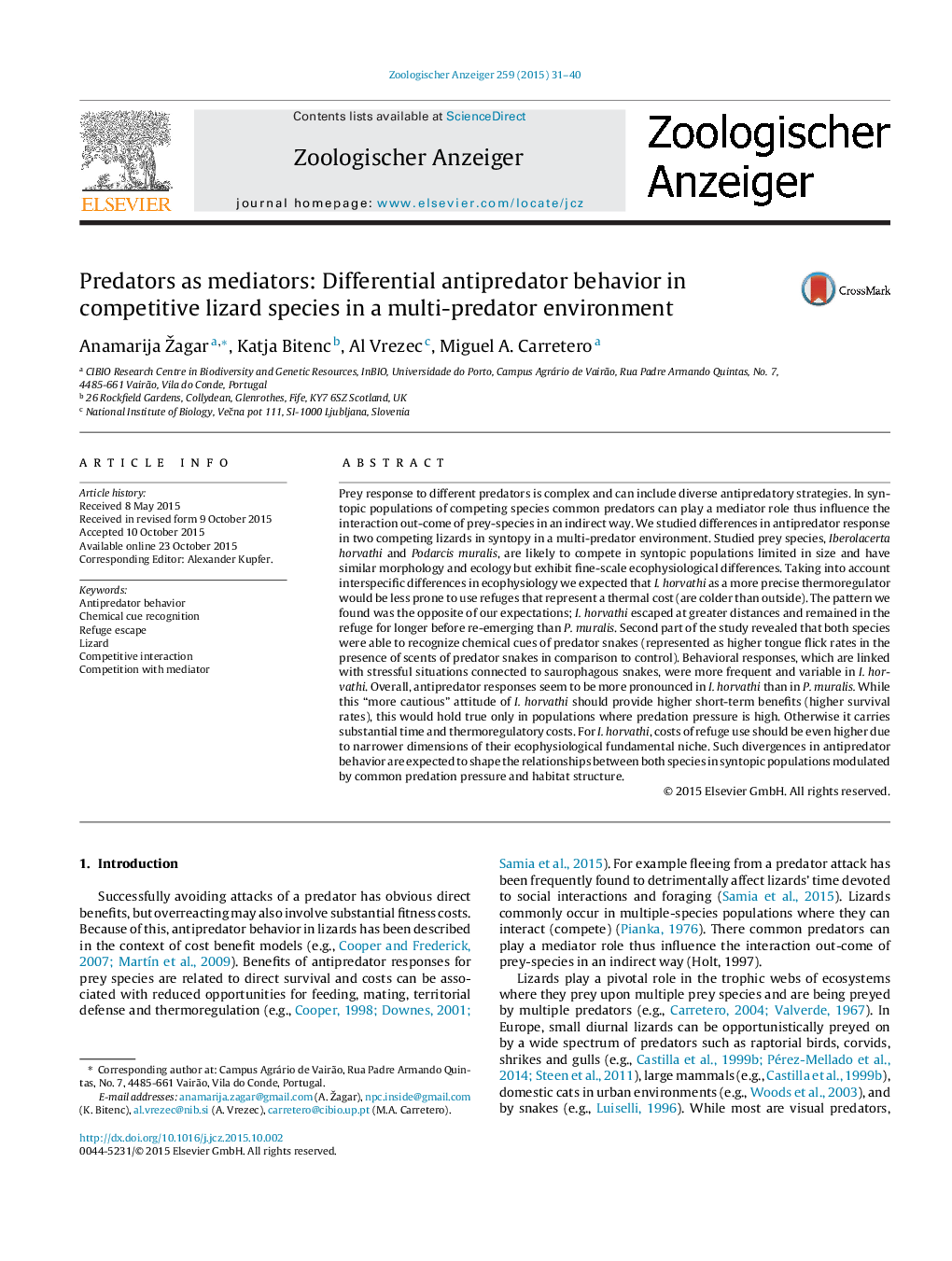| Article ID | Journal | Published Year | Pages | File Type |
|---|---|---|---|---|
| 2790499 | Zoologischer Anzeiger - A Journal of Comparative Zoology | 2015 | 10 Pages |
Prey response to different predators is complex and can include diverse antipredatory strategies. In syntopic populations of competing species common predators can play a mediator role thus influence the interaction out-come of prey-species in an indirect way. We studied differences in antipredator response in two competing lizards in syntopy in a multi-predator environment. Studied prey species, Iberolacerta horvathi and Podarcis muralis, are likely to compete in syntopic populations limited in size and have similar morphology and ecology but exhibit fine-scale ecophysiological differences. Taking into account interspecific differences in ecophysiology we expected that I. horvathi as a more precise thermoregulator would be less prone to use refuges that represent a thermal cost (are colder than outside). The pattern we found was the opposite of our expectations; I. horvathi escaped at greater distances and remained in the refuge for longer before re-emerging than P. muralis. Second part of the study revealed that both species were able to recognize chemical cues of predator snakes (represented as higher tongue flick rates in the presence of scents of predator snakes in comparison to control). Behavioral responses, which are linked with stressful situations connected to saurophagous snakes, were more frequent and variable in I. horvathi. Overall, antipredator responses seem to be more pronounced in I. horvathi than in P. muralis. While this “more cautious” attitude of I. horvathi should provide higher short-term benefits (higher survival rates), this would hold true only in populations where predation pressure is high. Otherwise it carries substantial time and thermoregulatory costs. For I. horvathi, costs of refuge use should be even higher due to narrower dimensions of their ecophysiological fundamental niche. Such divergences in antipredator behavior are expected to shape the relationships between both species in syntopic populations modulated by common predation pressure and habitat structure.
